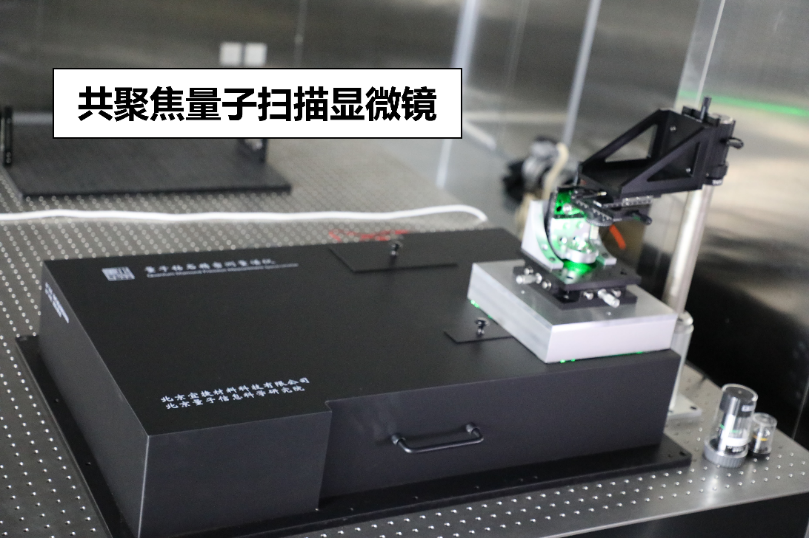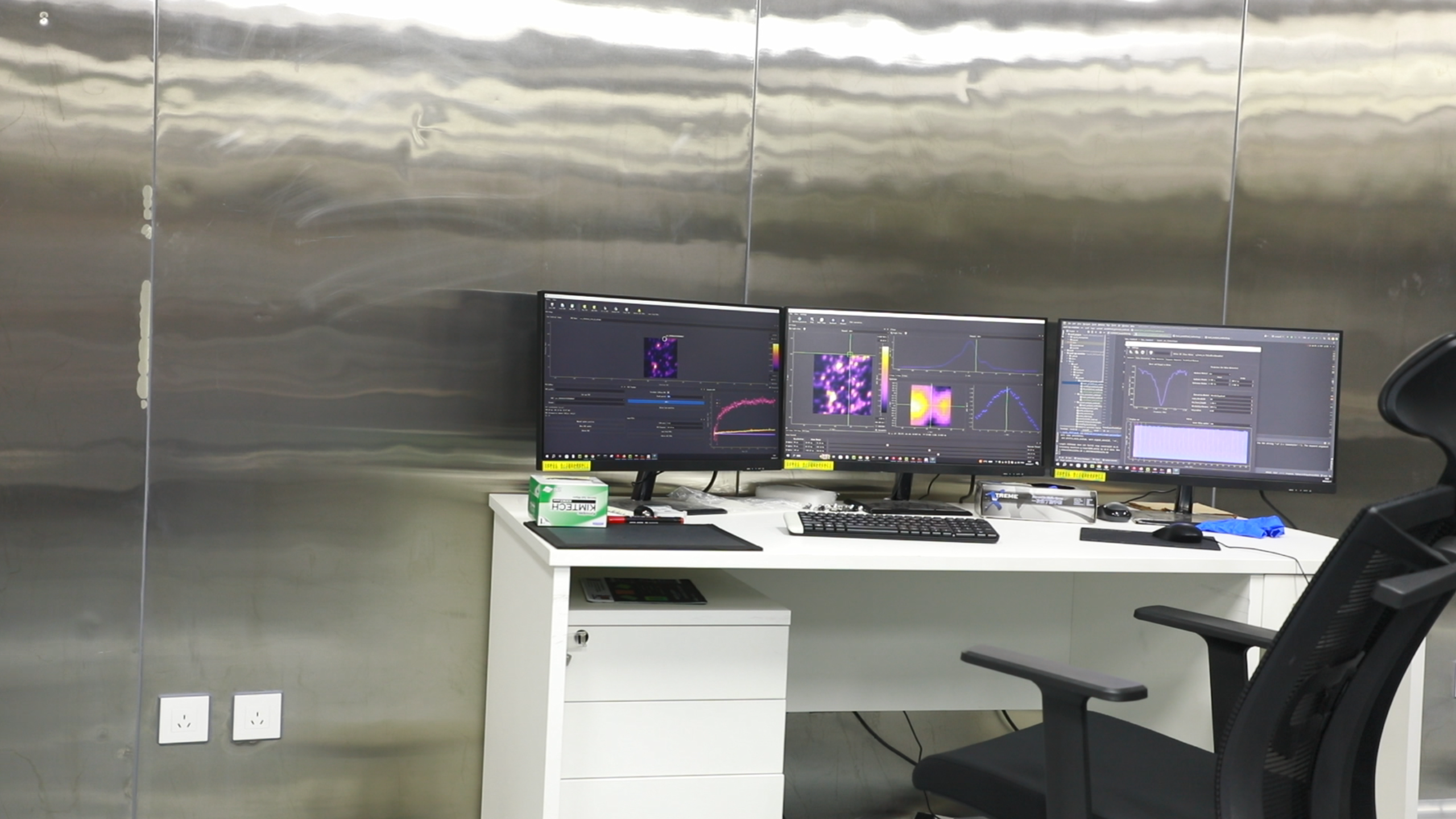The confocal The confocal quantum scanning microscope developed in our Academy was selected into the “List of Top 100 New Technologies and Products” at the 2024 Zhongguancun International Technology Trade Fair
2024/04/27
On April 25, as an important part of the 2024 Zhongguancun Forum Annual Conference, the Zhongguancun International Technology Trade Fair grandly released the “List of Top 100 New Technologies and Products” at the opening ceremony. The "Confocal Quantum Scanning Microscope" developed by the Atomic Ensemble Precision Measurement Group led by Yang Renfu, stood out from 3013 participating projects around the world and was successfully listed.

Confocal quantum scanning microscopy uses one of the quantum defects (NV color center) of diamond as the sensing unit to achieve high-resolution imaging of the microscopic magnetic structure of materials. The instrument has the functions of laser scanning microscopic imaging and spectral measurement, micro-nanoscale quantum spin resonance spectrum measurement, solid-state quantum spin manipulation and detection, etc. The scanning range of the instrument is more than 300 microns, the accuracy is better than 0.5 nanometers, and the imaging resolution reaches the optical diffraction limit.


The instrument is independently developed in Beijing Academy of Quantum Information Sciences, and is an important research tool in the fields of materials science and physics, and has gradually achieved important applications in the fields of superconducting materials research, biophysics, medical diagnosis and so on. The instrument can be combined with high-pressure module and temperature-control system for quantum measurement under corresponding extreme conditions. With its magnetic resonance measurement technology, it can also perform fluorescence imaging and spin resonance measurement of solid quantum materials such as diamond NV, SiV in Silicon Carbide, etc. The instrument developers mainly include: PI Renfu Yang, associate researcher Yan Liu, postdoctoral fellow Florian Boehm, doctoral student Xianqi Dong.
 中文
中文 Email
Email QCloud
QCloud Log in
Log in
